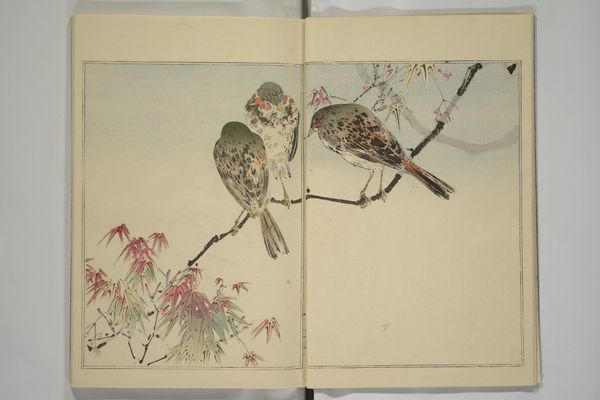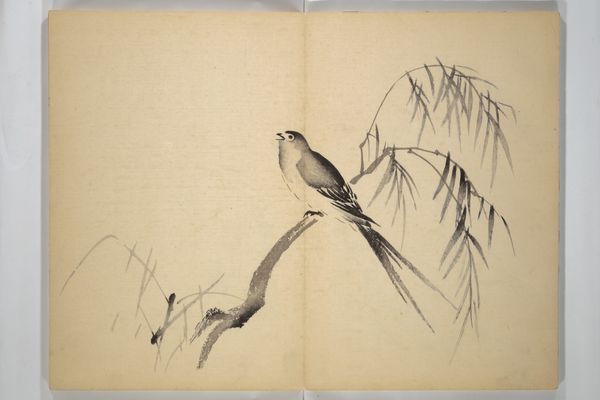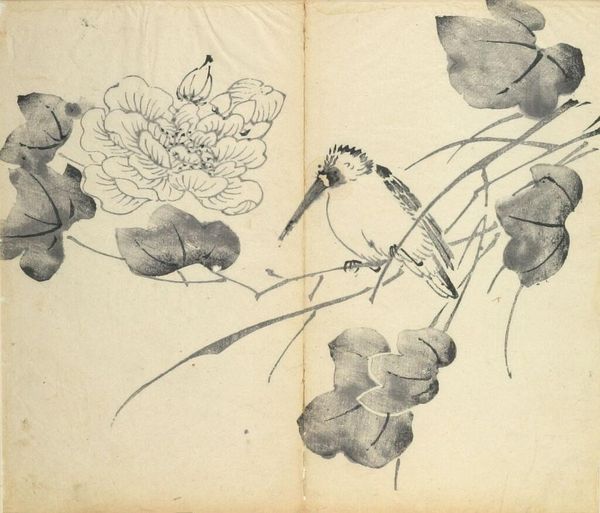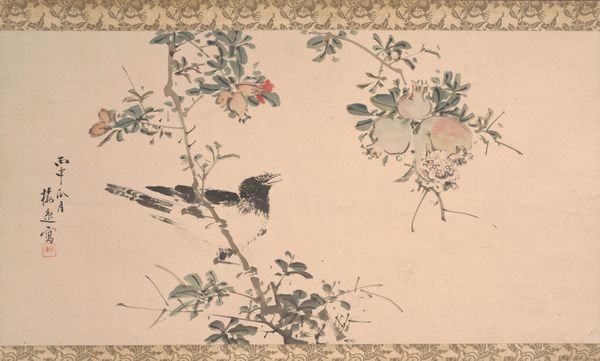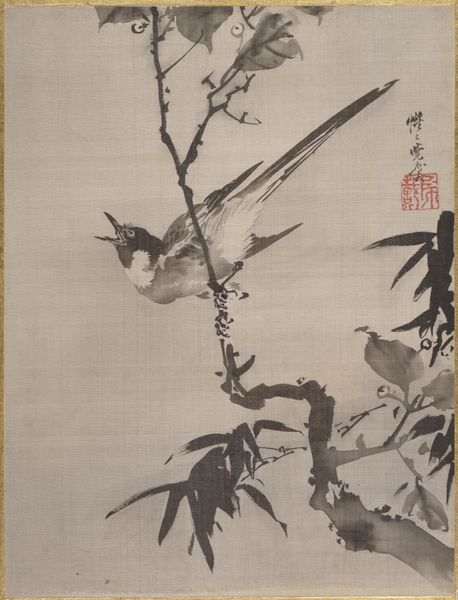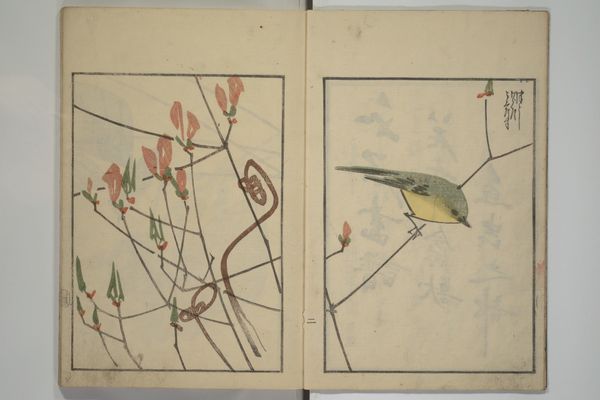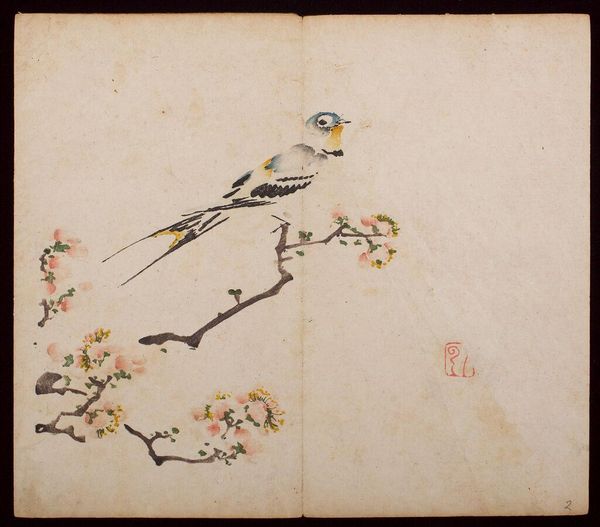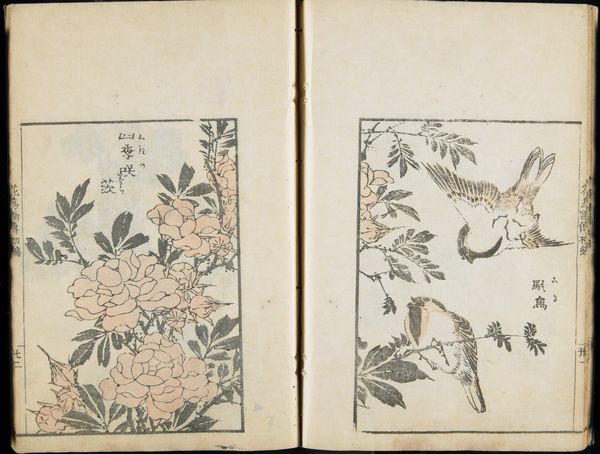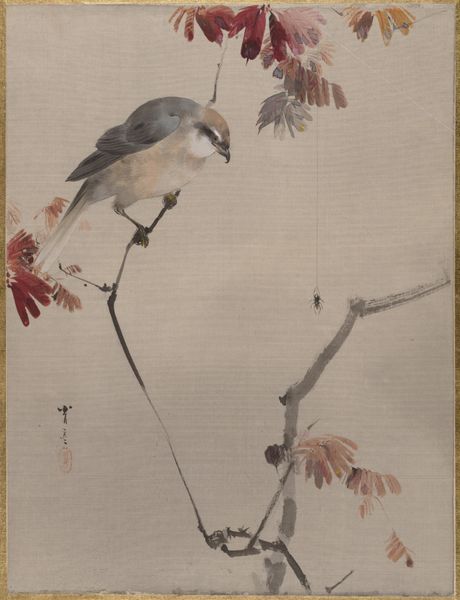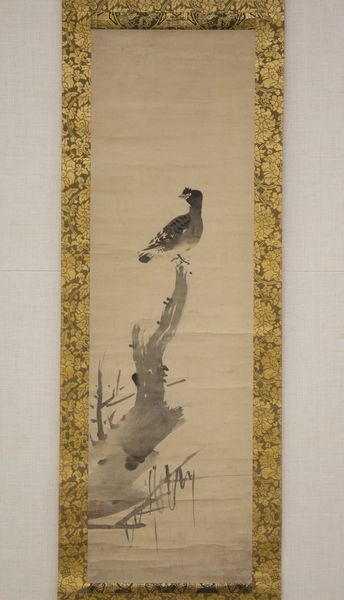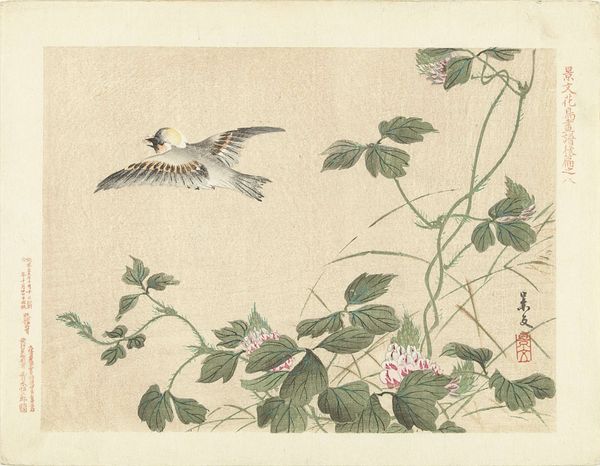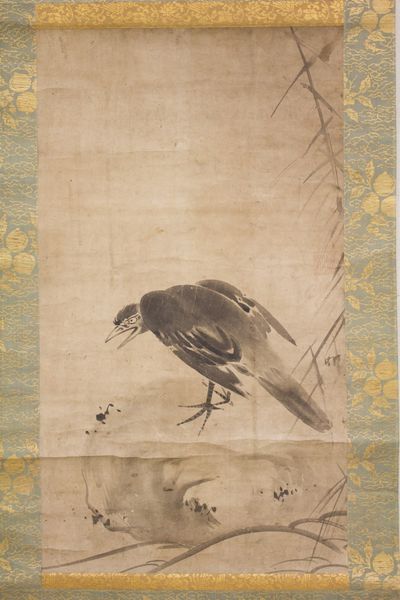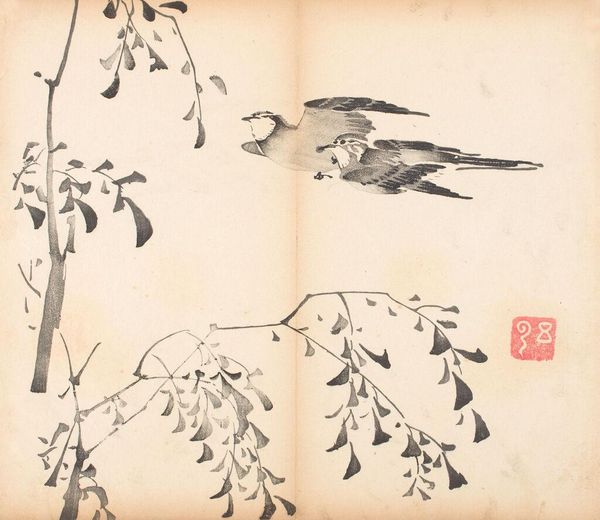
painting, print, paper, ink
#
painting
# print
#
book
#
asian-art
#
landscape
#
bird
#
ukiyo-e
#
paper
#
ink
#
orientalism
Dimensions: 11 × 8 3/8 in. (28 × 21.2 cm)
Copyright: Public Domain
This page from "Collected Haiku Poems" was made in Japan in the late 18th century by Komai Ki, who worked under the name Genki. As you can see, the subtle color woodblock print shows a bird perched on a leafy vine of morning glories. The image, with its emphasis on the natural world, reflects the influence of Zen Buddhism, which valued simplicity and direct experience. At the time, Japan was under the rule of the Tokugawa shogunate, a military dictatorship that enforced a strict social hierarchy. Despite the rigid social structure, there was a flourishing of artistic and intellectual activity, particularly among the merchant class. This art was displayed in books, like this one, as well as screens and hanging scrolls. While Genki's print is not overtly political, it's worth noting that many artists of the time used their work to critique the social and political order. The historian can reveal the web of social relations within which an artwork was made, reminding us that the meaning of art is contingent on its context. Primary sources, like diaries or letters, can tell us a great deal about these cultural contexts.
Comments
No comments
Be the first to comment and join the conversation on the ultimate creative platform.
